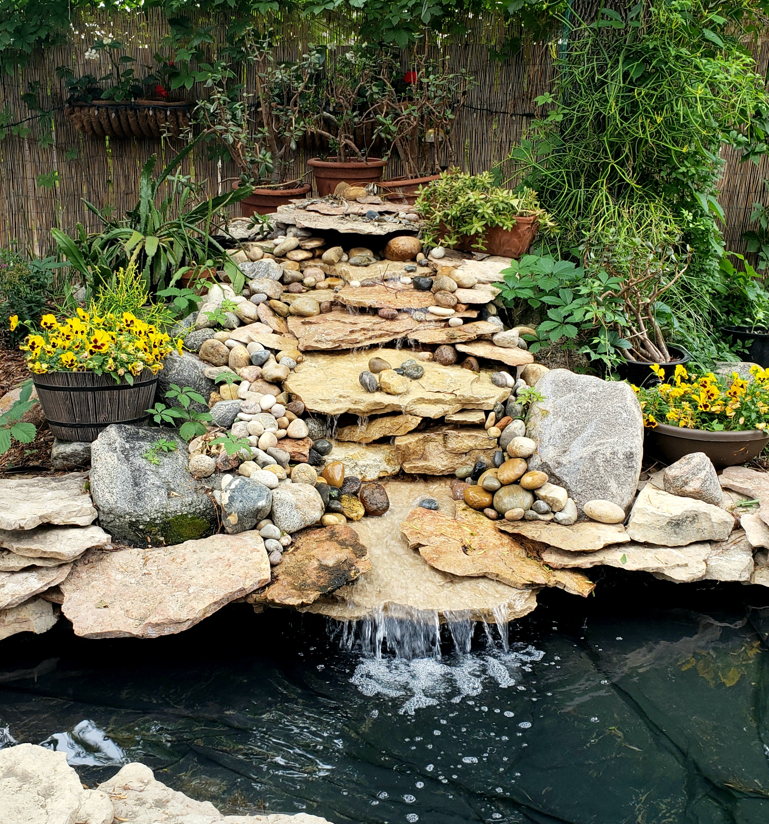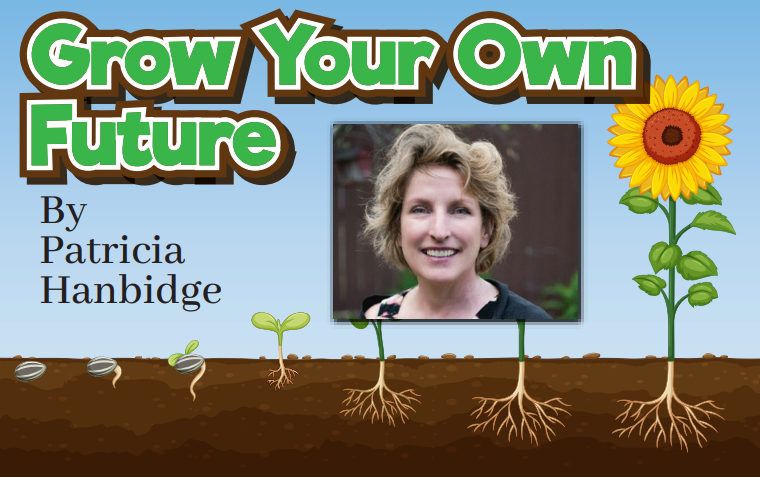Water in a landscape makes the ordinary – extraordinary! Somehow water finishes off the lovely ambiance we have in our outdoor living spaces. However, this time of year the crystal clear ponds are often more like a rendition of pea soup!
In order to keep the water quality, it is very important to stop the growth of algae in a water feature. Algae are actually very simple organisms that are an important part of the ecosystem. Just like land plants, algae need light, water, nutrients, carbon dioxide and oxygen in order to live. Knowing this is key to controlling algae as it is usually light and nutrients that will limit the growth.
The simplest method to control algae is to limit light and nutrients. Having plants cover a good part of the surface of the pond will aid in reducing algae growth. Limiting the amount of nutrients in the water will also help. Avoid using fertilizer around the pond as it is a great source of nutrients for the algae. It is important to have a balance between the size of the pond, the plant material and the number of fish. Do not overfeed fish as this is one of the fastest ways to increase algae growth. Rain, pollen and falling foliage will also create a surplus of nutrients that is ideal for increasing algae growth.
There are a number of forms of algae you may experience. Suspended or planktonic algae are very common and can quickly turn your clear pond into pea soup. Algae feed on the nutrients in the water and reproduce rapidly. When the nutrient level decreases, so will the algae population and the water will clear. When large amounts of algae die, it depletes the oxygen supply in the water which can also potentially kill fish or other animal life in the pond. It is also this anaerobic (without oxygen) water which can be rather foul smelling.

As in most aspects of life – just a little balance is the answer. Ensure that floating plants like duckweed or hyacinths cover 50 to 70% of the pond surface. Submerged plants or oxygenators will help keep the water smelling fresh. These plants will also help remove dissolved nutrients giving the algae less available food. If you have fish in your pond and you feed those fish, it is sometimes as simple as limiting the amount of food you feed as this is a great additive for algae.
I have a large pond which has a waterfall and a pool skimmer to help ensure any debris is removed from the water prior to rotting thus reducing the amount of "food" for algae. However, when there is a lot of vegetative material, the pond quickly takes on a green hue. My pond was deemed to be a dipping pond for my children thus has no fish so I have the option to chlorinate and control the bloom in a number of ways not possible with a pond that has plants and fish. As you can see by the image.... the pond is utilized in a number of ways! There are a number of chemical solutions on the market but keep in mind that they are not long-term solutions but rather a “quick fix”. Ensure you read the labels carefully and follow the manufacturer directions.
Once you have an algae bloom, it takes a couple of weeks to get that ecosystem back in balance. Patience is required in order to achieve a good natural balance.
Happy summer!
Hanbidge is the Lead Horticulturist with Orchid Horticulture. Find us at www.orchidhort.com; by email at [email protected]; on Facebook @orchidhort and on Instagram at #orchidhort. Tune into GROW Live on our Facebook page or check out the Youtube channel GROW.
The views and opinions expressed in this article are those of the author, and do not necessarily reflect the position of this publication.




